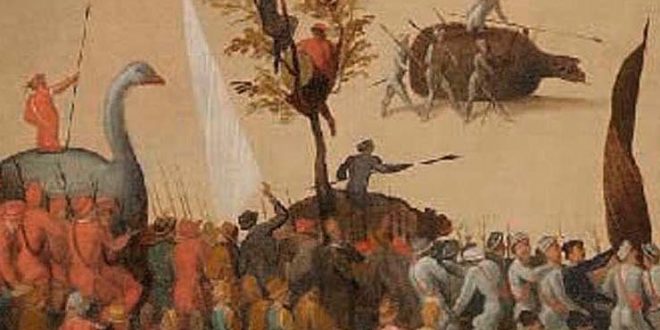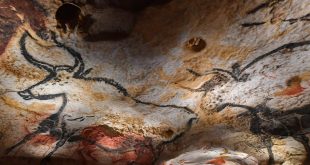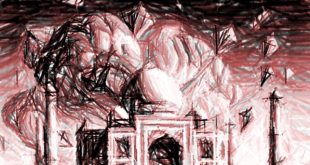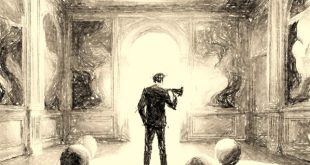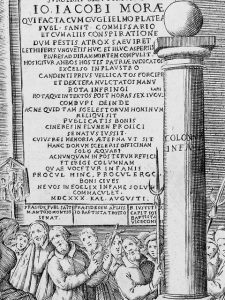 Monitor everyone, without respite and distraction, far from contagion
Monitor everyone, without respite and distraction, far from contagion
This is an Author’s journey set in Italy, with a time horizon ranging from 1348 to 2021. The whole itinerary is focus on pandemics over the centuries, and on their ability to influence the mental and geographical views of vast territories. It will be a special Author’s journey, which will cross Venice and Milan, Florence, San Geminiano and Siena. It will introduce you not only to the cities from which you will leave, but also to someone or something that will remain with you long time.
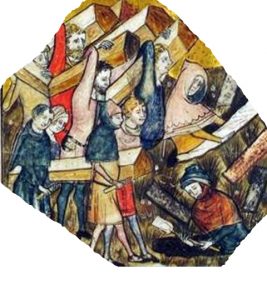 Author Travels can be a website https://www.viaggidautore.com/, the unique experience of sleeping in a convent with rooms frescoed by Renaissance painters, or, more simply, a canvas on which to paint your inner world through your travel wishes. Arché Travel https://www.archetravel.com/cataloghi-viaggi/destinazioni/italia/, on the other hand, offers an exclusive tour catalog of Italy tuned to its artistic and cultural heritage. An Italian association, the pordenonelegge.it Foundation https://www.turismofvg.it/intorno-al-festival/viaggi-d-autore, on the other hand, offers Author Travels in the territory of the city of Pordenone, thus offering you the opportunity to learn about its history. Inside the thematic benches of Meeting Benches https://meetingbenches.com/ and https://meetingbenches.net/, on the other hand, you can to get to know a nation, a city or a region, through the eyes of men and creative women who have been able to interpret their territory through creativity.
Author Travels can be a website https://www.viaggidautore.com/, the unique experience of sleeping in a convent with rooms frescoed by Renaissance painters, or, more simply, a canvas on which to paint your inner world through your travel wishes. Arché Travel https://www.archetravel.com/cataloghi-viaggi/destinazioni/italia/, on the other hand, offers an exclusive tour catalog of Italy tuned to its artistic and cultural heritage. An Italian association, the pordenonelegge.it Foundation https://www.turismofvg.it/intorno-al-festival/viaggi-d-autore, on the other hand, offers Author Travels in the territory of the city of Pordenone, thus offering you the opportunity to learn about its history. Inside the thematic benches of Meeting Benches https://meetingbenches.com/ and https://meetingbenches.net/, on the other hand, you can to get to know a nation, a city or a region, through the eyes of men and creative women who have been able to interpret their territory through creativity.
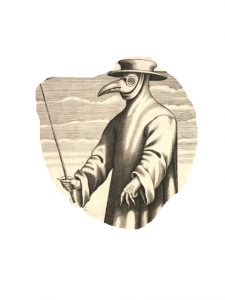 The first stop on our journey through pandemics is Venice, without forgetting the devastating effects of the plague and its containment measures are still present on the islands of the city that suffered waves of plague over the centuries. In the 1248 plague epidemic inhabitants died 40,000, while that of 1630 caused the death of a third of the population (50,000 deaths out of 140,000 inhabitants). These epidemics led the Venetians to build the first lazaretto to contain the contagion in history https://lazzarettiveneziani.it/it/visita-lisola (on the island of Santa Maria di Nazareth), as well as two churches that sanctioned the end of the plague (Santissimo Redentoreand, Madonna della Salute). As a reminder of this travel , you will want a Venetian mask too. You can Cà del Sol www.cadelsolmascherevenezia.com, where you can buy the Plague doctor mask.
The first stop on our journey through pandemics is Venice, without forgetting the devastating effects of the plague and its containment measures are still present on the islands of the city that suffered waves of plague over the centuries. In the 1248 plague epidemic inhabitants died 40,000, while that of 1630 caused the death of a third of the population (50,000 deaths out of 140,000 inhabitants). These epidemics led the Venetians to build the first lazaretto to contain the contagion in history https://lazzarettiveneziani.it/it/visita-lisola (on the island of Santa Maria di Nazareth), as well as two churches that sanctioned the end of the plague (Santissimo Redentoreand, Madonna della Salute). As a reminder of this travel , you will want a Venetian mask too. You can Cà del Sol www.cadelsolmascherevenezia.com, where you can buy the Plague doctor mask.
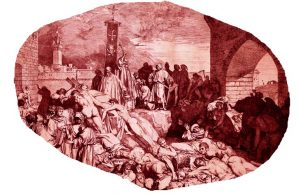 Here we are ready for our full immersion in the second stage of our author’s journey. The pandemic panorama of Italy between the fourteenth and twenty-first centuries, sweeps into the city of Milan, where at the time of the plague of 1577 the bishop Carlo Borromeo, combining charity and quarantine, wrote a special “Memorial” for the use of posterity. The one described by the writer Alessandro Manzoni in chapter 32 of The Betrothed, is instead a procession of the body of San Carlo Borromeo to ward off the plague of 1630. You will not have resisted the temptation to visit the beautiful fashion shops in the city center, but before leave again go to Galleria Vittorio Emanuele II, enter the Feltrinelli bookshop https://www.lafeltrinelli.it/?utm_source=google-mybusiness, and buy a book that seems to describe a pandemic today: The plague of San Carlo: Milan 1576 -1577.
Here we are ready for our full immersion in the second stage of our author’s journey. The pandemic panorama of Italy between the fourteenth and twenty-first centuries, sweeps into the city of Milan, where at the time of the plague of 1577 the bishop Carlo Borromeo, combining charity and quarantine, wrote a special “Memorial” for the use of posterity. The one described by the writer Alessandro Manzoni in chapter 32 of The Betrothed, is instead a procession of the body of San Carlo Borromeo to ward off the plague of 1630. You will not have resisted the temptation to visit the beautiful fashion shops in the city center, but before leave again go to Galleria Vittorio Emanuele II, enter the Feltrinelli bookshop https://www.lafeltrinelli.it/?utm_source=google-mybusiness, and buy a book that seems to describe a pandemic today: The plague of San Carlo: Milan 1576 -1577.
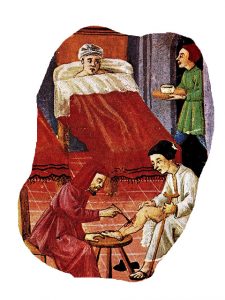 To discover Florence from an unusual point of view, entering an era that brought the city to its knees, Destination Florence https://www.destinationflorence.com/it offers you a tour through the streets of the city center. You will find traces of a disastrous period: that of the plague. Visiting the Venerable Arciconfraternita della Misericordia https://www.misericordia.firenze.it/, you will discover that during the plague of 1348 and 1630 he worked in the rescue and transport of “suspects” and infected in the hospital, and that still in this moment is at the service of the city. Do not leave Florence without having gone to the Vivoli ice cream parlor https://vivoli.it/, for coffee, soft drinks and ice cream in full anti-contagion mode https://firenze.repubblica.it/cronaca/2020/05/02/foto / florence_from_vivoli_the_gelato_and_caffe_pass_from_buchetta_del_vino-255486745/1 /.
To discover Florence from an unusual point of view, entering an era that brought the city to its knees, Destination Florence https://www.destinationflorence.com/it offers you a tour through the streets of the city center. You will find traces of a disastrous period: that of the plague. Visiting the Venerable Arciconfraternita della Misericordia https://www.misericordia.firenze.it/, you will discover that during the plague of 1348 and 1630 he worked in the rescue and transport of “suspects” and infected in the hospital, and that still in this moment is at the service of the city. Do not leave Florence without having gone to the Vivoli ice cream parlor https://vivoli.it/, for coffee, soft drinks and ice cream in full anti-contagion mode https://firenze.repubblica.it/cronaca/2020/05/02/foto / florence_from_vivoli_the_gelato_and_caffe_pass_from_buchetta_del_vino-255486745/1 /.
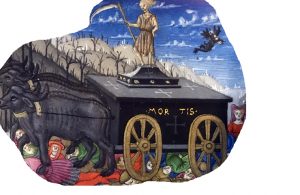 In 998, San Gimignano was a village, but in the first three centuries after the year 1000, the itinerary of pilgrims heading to Rome passed right inside its city walls. Around the first half of the 14th century 13,000 lived in the city, but the plague of 1348 decimated two thirds and that of 1631 reduced them to 3,000 souls, decreeing their gradual decline. There are several ways to visit this real “city of 72 towers”, starting with the well in the Piazza della Cisterna, the one where the plague victims quenched their thirst. The epidemics decimated the population, but did not alter the consumption of wine, which in the year 1348 generated tax revenues up by 5%, perhaps also because like all wines, Vernaccia di San Gimignano was also use as a medicine https://wineexperience.vernacciasangimignano.it/. Buy yourself at least six bottles of that wine. You will like it so much that you will want to come back.
In 998, San Gimignano was a village, but in the first three centuries after the year 1000, the itinerary of pilgrims heading to Rome passed right inside its city walls. Around the first half of the 14th century 13,000 lived in the city, but the plague of 1348 decimated two thirds and that of 1631 reduced them to 3,000 souls, decreeing their gradual decline. There are several ways to visit this real “city of 72 towers”, starting with the well in the Piazza della Cisterna, the one where the plague victims quenched their thirst. The epidemics decimated the population, but did not alter the consumption of wine, which in the year 1348 generated tax revenues up by 5%, perhaps also because like all wines, Vernaccia di San Gimignano was also use as a medicine https://wineexperience.vernacciasangimignano.it/. Buy yourself at least six bottles of that wine. You will like it so much that you will want to come back.
 For Siena and its territory, the plague was the most epoch-making of the shocking epidemics (80,000 deaths, including two of its famous painters, Pietro and Ambrogio Lorenzetti). It arrived from Pisa in 1348. It was not the only plague, which reached the city; that of 1374 decimated a third of the population. They did not ring bells, they did not cry for anyone. Simply, everyone was waiting for death. It was then that Saint Catherine encouraged the assistance of the dying and sick with the plague. The effects of the Black Death had repercussions on dissolved family structures and mutilated urban landscapes, as in the unfinished facade of the Duomo. In memory of your visit, buy a book those moments: “Birth and death of a medieval quarter. Siena and the new village of Santa Maria https://www.hoepli.it/libro/nascita-e-morte-di-a-medieval-district-siena-and-the-new-village-of-santa-maria-astride-the-plague-of-1348/9788869956102.html.
For Siena and its territory, the plague was the most epoch-making of the shocking epidemics (80,000 deaths, including two of its famous painters, Pietro and Ambrogio Lorenzetti). It arrived from Pisa in 1348. It was not the only plague, which reached the city; that of 1374 decimated a third of the population. They did not ring bells, they did not cry for anyone. Simply, everyone was waiting for death. It was then that Saint Catherine encouraged the assistance of the dying and sick with the plague. The effects of the Black Death had repercussions on dissolved family structures and mutilated urban landscapes, as in the unfinished facade of the Duomo. In memory of your visit, buy a book those moments: “Birth and death of a medieval quarter. Siena and the new village of Santa Maria https://www.hoepli.it/libro/nascita-e-morte-di-a-medieval-district-siena-and-the-new-village-of-santa-maria-astride-the-plague-of-1348/9788869956102.html.
 Then, as now, an epidemic blocked people inside their homes. Then, unlike now, mobile altars had been invent to celebrate religious functions in the squares and on the corners of the most important streets: it was enough to look out of the house to hope. Now, unlike then, we look out the windows to encourage each other with an “everything will be fine”. You certainly do not want to buy a souvenir of the Covid-9 virus, but there are those who offer it: Snapback hat, adjustable in width. https://www.spreadshirt.ch/it/shop/design/souvenir+del+virus+corona+2020+souvenir+covid+19+cappello+snapback-D5ebfba71e447421121ec1af6?sellable=ZbrnDY02LltEbddNQgaz-905-34. The intellectual properties of the images that appear on this blog correspond to their authors. The only purpose of this site is to spread the knowledge of these creative people, allowing others to appreciate the works. If you want to know our author travel already published, you can type http://meetingbenches.com/category/author_travels/.
Then, as now, an epidemic blocked people inside their homes. Then, unlike now, mobile altars had been invent to celebrate religious functions in the squares and on the corners of the most important streets: it was enough to look out of the house to hope. Now, unlike then, we look out the windows to encourage each other with an “everything will be fine”. You certainly do not want to buy a souvenir of the Covid-9 virus, but there are those who offer it: Snapback hat, adjustable in width. https://www.spreadshirt.ch/it/shop/design/souvenir+del+virus+corona+2020+souvenir+covid+19+cappello+snapback-D5ebfba71e447421121ec1af6?sellable=ZbrnDY02LltEbddNQgaz-905-34. The intellectual properties of the images that appear on this blog correspond to their authors. The only purpose of this site is to spread the knowledge of these creative people, allowing others to appreciate the works. If you want to know our author travel already published, you can type http://meetingbenches.com/category/author_travels/.
 Meeting Benches World art in all forms
Meeting Benches World art in all forms
